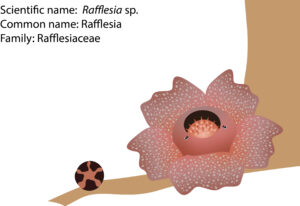
The stories of the biggest flower in the world, Rafflesia
The largest flower in the world, Rafflesia (Rafflesiaceae), however, is from a small obligate endo-holoparasitic Asian plant genus. Although famous for its huge flowers, it’s a rare species and only lives in a small and special area that is high island endemism. This genus is classified as a member of Malpighiales, and native to tropical Southeast Asia, mainly found in Indonesia, Malaysia, and the Philippines. There are roughly 30 to 37 Rafflesia species that are […]
Read More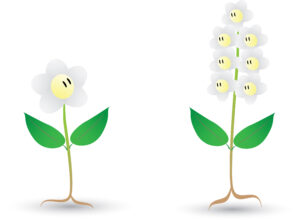
A flower or an inflorescence?
A flower is the reproductive organ of flowering plants. After successful pollination via self- or cross-pollination aided by pollinators, the flower turns into fruits or seed pods. However, the “flowers” are not always called flowers, sometimes they are referred to as inflorescence. What are the differences and relationships between a flower and an inflorescence? A flower, known as bloom or blossom is the seed-bearing part of a plant that consists of reproductive organs like stamens […]
Read More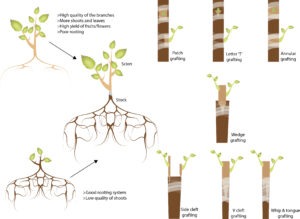
Plant propagation – grafting
Grafting involves two plants of closely related species. It is done by uniting the young part of a plant such as an axil, terminal bud, or young shoot into other plants of the same species or genus. The stock plant is the lower part (or mother plant), and scion, which is the bud or shoots that will be growing on the stock and bear fruits. Grafting has the benefits of combining the best traits of […]
Read More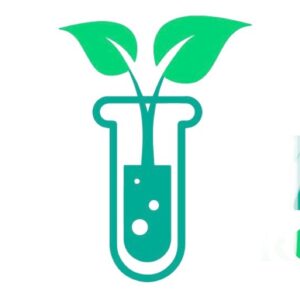
Plant propagation – vegetative propagation
Vegetative propagations or asexual reproduction are frequently used in horticulture or agriculture to propagate economically valuable plants and cash crops, especially the perennial species that produce sterile or no seeds. Asexual reproduction does not involve the union of gametes, production of seeds or spores, and changes in the number of chromosomes, which often used single cells (algae), tissues, organs, or specialized organs that undergo structural modifications. Regeneration through somatic cells, tissues, or organs is also […]
Read More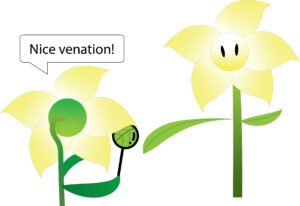
Not only used for photosynthesis – the roles of leaf in species identification
A great appreciation goes to the famous Swedish naturalist Carolus Linnaeus who launched the binomial nomenclature system (International Code for Botanical Nomenclature), which is still applicable nowadays. How to identify the species based on morphological traits? A plant is easily identified through its flower or fruits because either the color or the structure of the organs are distinguished. However, not all plants have flowers and some flowering plants are seasonal and may have very short […]
Read More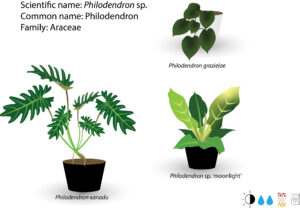
Philodendron
Indoor plants have undoubtedly become an essential of every house. As the global pandemic caused by covid19 cases increasing, many careers are required to work remotely or work from home (WFH). From time to time, people found it is better to have indoor plants to decorate the working area, and now, house plants are widely demanded creating greenery in the house. The main criteria for choosing the indoor plant are to have plants that demand […]
Read More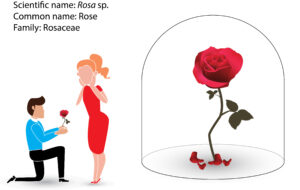
Roses are red, violets are blue, I can’t imagine my life without you
When we talk about Valentine’s Day, a rose is a must! It is the national floral emblem of the United States in which President Ronald Reagan had signed the legislation in the year 1986. Rose, the romantic flower that is scientifically known as Rosa has about one hundred and fifty species under the family of Rosaceae that possess countless hybrids that are valued for their beauty. Rose is planted mainly for ornamental purposes, which is […]
Read More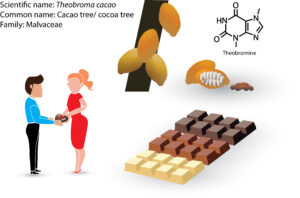
The food of God and gift of the Valentine, cocoa
Theobroma this genus consists of about twenty species of evergreen trees that can be found from tropical America. The trees can grow naturally as understory plants in the forests. Theos means God, while broma means food. It refers to the seeds of Theobroma cocoa as the food of God, which is the chocolate. Theobroma cacao, commonly known as cocoa or cacao is native to the tropical forests of Central America. This tree can grow up […]
Read More